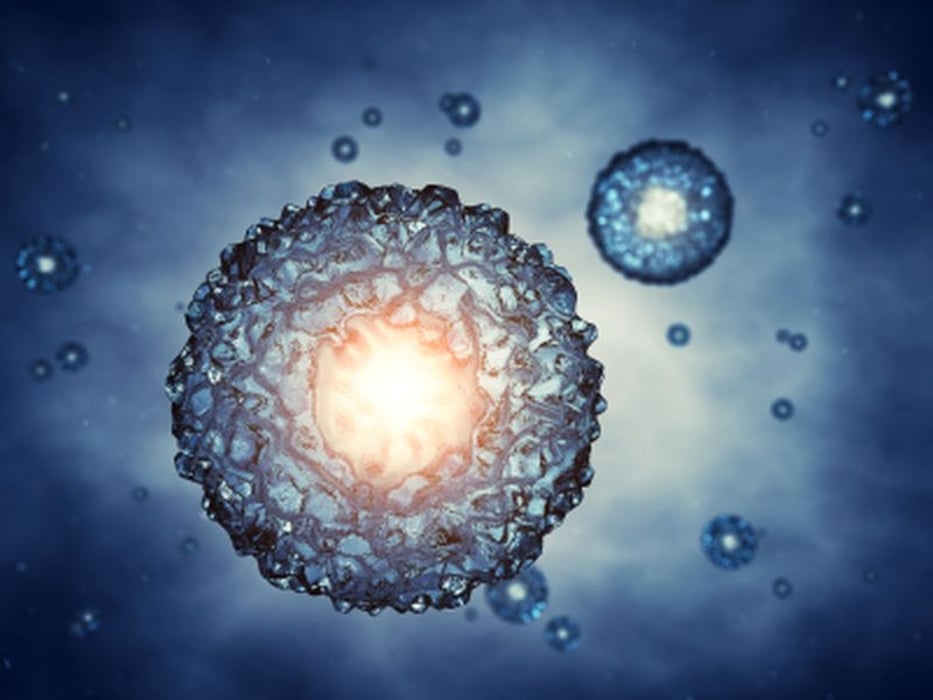In Vitro Fertilization: What It Is, How It Works

Infertility is a common and emotionally challenging issue that affects many couples worldwide.
In the United States, about 9% of men and 11% of women of reproductive age experience fertility problems, according to the Eunice Kennedy Shriver National Institute of Child Health and Human Development.
In vitro fertilization (IVF) is an advanced technology designed to help individuals who are dealing with infertility or specific medical conditions achieve pregnancy. This article will explore what IVF is, how it works and its success rate.
What is in vitro fertilization?
The Mayo Clinic defines IVF as a sophisticated sequence of procedures to address fertility challenges, prevent genetic disorders and promote conception.
“Basically, fertilization happens in the lab instead of in the womb,” said Dr. James Stelling, medical director of Stony Brook Medicine's Island Fertility at Advanced Specialty Care in Commack, N.Y.
IUI vs. IVF treatment: What’s the difference?
Couples struggling to conceive often contemplate fertility treatments and the most suitable option for their needs.
Northwestern Medicine notes two common procedures are available to assist such couples:
- Intrauterine insemination (IUI) involves placing sperm directly into a woman's uterus using a speculum.
- IVF entails surgically retrieving eggs through a vaginal needle, followed by fertilization outside the body.
The Society for Assisted Reproductive Technology says many couples choose IUI because it has a lower cost than IVF. IUI typically ranges from a few hundred dollars to $2,000 per cycle, depending on the clinic, medication type and necessary follow-up procedures.
But it's important to consider that IUI is significantly less effective than IVF, and it may require multiple cycles to conceive, approaching half the cost of IVF.
In the United States, IVF averages $11,000 to $12,000, but its success rates are considerably higher than those of IUI.
How does IVF work?
IVF involves retrieving mature eggs from the ovaries, fertilizing them with sperm in a lab, and transferring the resulting embryos to the uterus, according to the Mayo Clinic. A full IVF cycle usually takes three weeks, but it can take longer. This advanced assisted reproductive technology offers high success rates and can use a couple's own eggs and sperm or involve donors.
"Age is the biggest predictor of success rates, and as women age, they produce fewer eggs,” Stelling said. “The more eggs a woman produces, the better her chances for successful fertilization. IVF focuses on both the number of eggs and the quality of those eggs. However, not all eggs will fertilize. Here, we can take the best one and implant that embryo into the mother.”
What’s the IVF process like?
As outlined by Penn Medicine, the IVF process involves five steps.
- Fertility drugs containing follicle-stimulating hormones prompt the body to produce more than one egg monthly.
- Follicular aspiration is used to retrieve the eggs.
- The partner provides a sperm sample, or donor sperm may be used.
- The best sperm are combined with the best eggs.
- Three to five days later, the embryo is transferred to the uterus using a catheter.
The IVF process mimics natural reproduction, and the pregnancy test determines its success.
What’s the IVF success rate?
Couples often want to know their potential odds for success before starting IVF. A test can help doctors offer an estimate.
“An AMH [anti-mullerian hormone] test helps assess a woman's response to injectable fertility drugs used to stimulate ovaries for in vitro fertilization treatment,” Stelling said. It's a simple blood test.
Both men and women produce AMH, but it is commonly used to assess women's reproductive health, according to the Cleveland Clinic. AMH levels indicate how many eggs their ovaries contain. Higher AMH levels suggest a larger ovarian reserve with more eggs, while lower levels indicate a diminished reserve.
An AMH test provides essential information about the best time to conceive.
Based on a study of 2,872 women who were candidates for IVF, 19.23% who underwent fresh embryo transfer and 28.62% who had frozen embryo transfer, achieved fertility, according to a report in JBRA Assisted Reproduction.
“Though IVF was introduced back in 1978, success rates have increased dramatically in recent years, giving us better success with a single embryo," Stelling said. "As such, there are fewer instances of twins and triplets from IVF mothers.”
How much does IVF cost?
In vitro fertilization costs vary based on location, clinic reputation, required medications, and additional procedures. IVF treatment in the United states ranges from $11,000 to $12,000 per cycle, but this can vary.
When considering medications, pre-testing and other associated expenses, however, the total cost may come to $20,000 to $30,000 or even more.
The path to parenthood through IVF
In vitro fertilization offers hope to countless individuals and couples facing infertility challenges. While IVF has significant financial implications, its success rates and potential to overcome various reproductive hurdles make it a widely sought-after option. Despite the costs involved, the opportunity to achieve the dream of parenthood makes IVF a remarkable advancement in assisted reproductive technologies.
SOURCE: James Stelling, MD, medical director, Stony Brook Medicine Island Fertility at Advanced Specialty Care, Commack, N.Y.
Related Posts
Más niños y adolescentes de EE. UU. se someten a cirugías para perder peso
MARTES, 6 de junio de 2023 (HealthDay News) -- A medida que la obesidad aumenta...
T-Cell Tolerant Fraction Can Predict Immunotherapy Toxicity
MONDAY, Aug. 21, 2023 (HealthDay News) -- The T-cell tolerant fraction predicts...
When Older Dogs’ Hearing Fades, Risk of Dementia Rises
FRIDAY, Aug. 12, 2022 (HealthDay News) -- When dogs' hearing fades, their mental...
